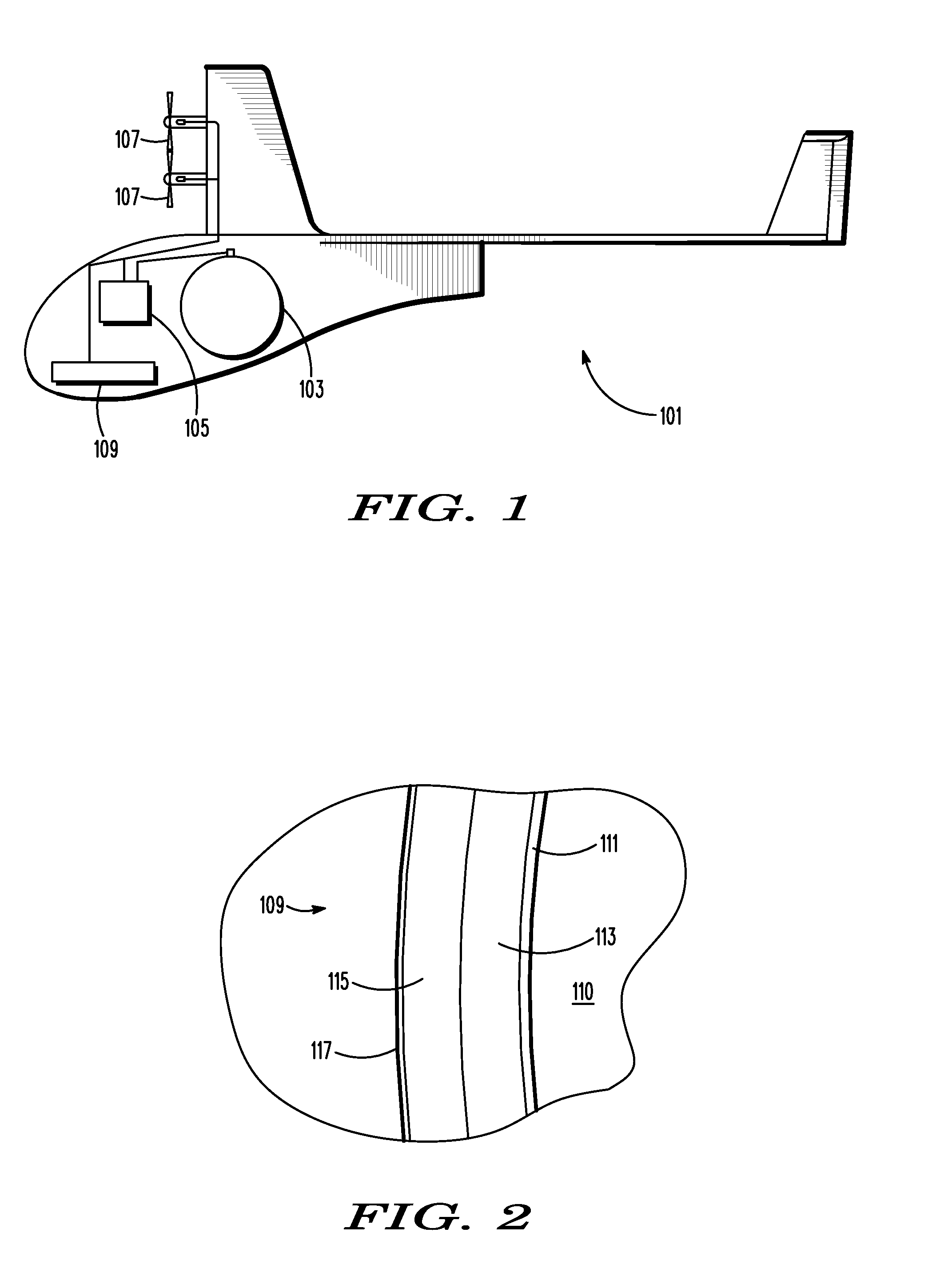Cryogenic Liquid Tank
a cryogenic liquid and tank technology, applied in the direction of container discharging methods, vessel construction details, transportation and packaging, etc., can solve the problems of unfavorable high-altitude, long-duration aircraft, and hydrogen weighing about 10 to 20, and achieve the effect of changing the thermal conductivity of any given portion of the wall
- Summary
- Abstract
- Description
- Claims
- Application Information
AI Technical Summary
Benefits of technology
Problems solved by technology
Method used
Image
Examples
Embodiment Construction
[0027]The invention summarized above and defined by the enumerated claims may be better understood by referring to the following detailed description, which should be read with the accompanying drawings. This detailed description of particular preferred embodiments of the invention, set out below to enable one to build and use particular implementations of the invention, is not intended to limit the enumerated claims, but rather, it is intended to provide particular examples of them.
[0028]With reference to FIG. 1, typical embodiments of the present invention reside in a liquid hydrogen tank for a high-altitude long-endurance aircraft. The embodiment is well suited for use by an unmanned long-duration aircraft 101 that is configured to fly in the stratosphere. The aircraft includes one or more tanks 103 to carry hydrogen fuel. Hydrogen gas that boils off from the tank is piped to a power converter 105 (which is typically a fuel cell or internal combustion engine). The power converter...
PUM
| Property | Measurement | Unit |
|---|---|---|
| pressure | aaaaa | aaaaa |
| temperature | aaaaa | aaaaa |
| pressure | aaaaa | aaaaa |
Abstract
Description
Claims
Application Information
 Login to View More
Login to View More - R&D
- Intellectual Property
- Life Sciences
- Materials
- Tech Scout
- Unparalleled Data Quality
- Higher Quality Content
- 60% Fewer Hallucinations
Browse by: Latest US Patents, China's latest patents, Technical Efficacy Thesaurus, Application Domain, Technology Topic, Popular Technical Reports.
© 2025 PatSnap. All rights reserved.Legal|Privacy policy|Modern Slavery Act Transparency Statement|Sitemap|About US| Contact US: help@patsnap.com



